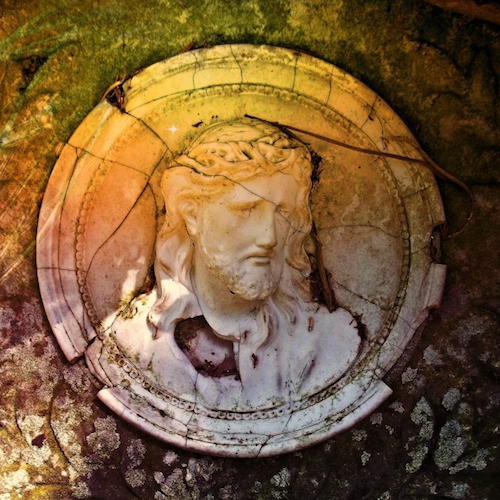We run our website the way we wished the whole internet worked: we provide high quality original content with no ads. We are funded solely by your direct support. Please consider supporting this project.

Overemphasizing Christ?
In response to my work, some have argued that I tend to overemphasize Christ. In light of the claim that in Jesus we have the one and only definitive Word of God and that no previous revelation should ever be placed alongside him or allowed to qualify what he reveals about God, some allege that I am guilty of what is called “Christomonism.” This charge has been leveled against thinkers with increasing frequency these days as more modern bible interpreters and theologians have grown increasingly Christocentric in their theologizing and biblical exegesis.
The curious thing about the charge of “Christomonism” is that, as frequently as the charge is made, there is little consensus on what the term itself means. So far as I’ve been able to determine, there are eight very different theological perspectives that have been associated with this label. “Christomonism” has been used to characterize:
1) Past and present anti-Trinitarian modalism, as one finds today in the “Jesus Only” or “Oneness” Pentecostal movement;
2) Monophysitism, the ancient Christological heresy the sees Jesus as a hybrid mixture of God and humanity;
3) Schools of thought that over-emphasis Christ at the expense of the Holy Spirit;
4) “Christofascism,” a term popularized by Dorothee Sölle;
5) The tendency of some Western preachers who preach “Christ in isolation from God” and who thereby minimize the fatherhood and transcendence of God;
6) The alleged tendency of neo-orthodox theologians such as Barth to reduce all theology to Christology;
7) The view that Christ is the one and only Savior, raised by pluralists against orthodox Christians; and finally;
8) Any who espouse a theology that is more Christocentric than the accuser thinks is appropriate.
In this light, in what sense could the theology and orientation toward the OT that I’ve spelled out in Crucifixion of the Warrior God and other writings be justly labeled “Christomonism”?
I believe my various publications as well as over twenty years of archived sermons suffice in making it clear that I espouse an orthodox Christology (of the Kenotic variety), a robust social Trinitarianism, and a charismatically-inclined emphasis on the Holy Spirit that preclude the first six perspectives being applied to me.
I readily admit I’m guilty of #7, but since this has been the view of the historic-orthodox Church, I feel I’m in very good company.
I also happily confess I am guilty of #8, for I have frankly acknowledged that I believe most theologians are inadequately Christocentric, which implies that I’m more intensely Christocentric than most think is appropriate. At the same time, I have attempted to demonstrate that my Christocentric orientation, and most importantly, my conviction that the revelation of God in Christ should never be synthesized with other previous portraits of God, is reflected in the NT. This, I believe, is the ultimate court of appeal against which all charges of an aberrant theology must be assessed.
I am, in reality, simply trying to work out the hermeneutical implications of the Christocentric orientation that the Church has always confessed, especially as emphasized among the Reformers and even more so as it was embraced by the Anabaptists. As Martin Luther once suggested, we should adopt the mindset of Paul when he said he “resolved to know nothing except Christ crucified” (referring to 1 Cor. 2:2). I believe Luther has it exactly right.
Unfortunately, it seems to me that Luther found a great deal revealed about God in Scripture that wasn’t consistent with what is revealed in the cross. He developed a theology of God’s “masks,” the primary purpose of which was to express God’s action when he’s acting in ways that are inconsistent with what he reveals about himself in Christ. My work is, at its heart, simply my attempt to work out Luther’s conviction consistently and apply it to our interpretation of the OT violent portraits of God.
Photo via Visualhunt
Category: General
Tags: Christocentrism, Crucifixion of the Warrior God, Cruciform Theology, Jesus, Orthodoxy
Topics: Biblical Interpretation
Related Reading

The Witness of Graffiti (Rocks Crying Out)
Ibrahim Iujaz via Compfight On this eve of Easter, we wanted to share something that fit the mood of the time between the crucifixion and the resurrection. D.L. Mayfield wrote this striking piece on the longing for the Kingdom of God in the midst of overwhelming brokenness. We thought it was the perfect reflection for…

Two Questions to Unlock Violent Divine Portraits
There are two basic questions that help us to interpret what is going on in the violent portraits of God in the Old Testament, as I propose in Crucifixion of the Warrior God. The First Question: What does the “God-breathed” revelation of the cross teach us about the nature of God’s “breathing”? God “breathed” his…

Close Encounters of the Third (Kingdom) Kind: A Reflection on the Missio Alliance Conference
What an incredible gathering we had last week! It was invigorating, informative and fun! What stands out most to me was the family-feel of the conference. Like most of you, I have usually felt a bit alien when attending Christian conferences throughout the years. Not this one. You could sense the shared kingdom ethos in…

The Longing of Advent
The Advent season is a time of anticipating the coming of God, in Christ, a time of turning our imagination toward the revelation of God’s love for us. This after all is the deepest longing of our heart, and our natural longings always point us to something real. We grow hungry only because there’s such…

A Brief Theology of the Trinity
“The economic Trinity is the immanent Trinity, and the immanent Trinity is the economic Trinity.” This is the maxim introduced by the Catholic theologian Karl Rahner that should shape our discussion of the Trinity. It is simply a short-hand way of saying that since the way God is toward us in Christ truly reveals God,…

A Cross-Centered Evaluation of Responses to Tragedy
I’d like to pick up where I left off on my previous post about Draper’s article entitled “Aurora shooting inspires various perspectives on God and belief.” Toward the end of his article, Draper reports on an informal survey conducted by Stephen Prothero on his CNN Blog. Prothero simply asks people to respond to the question: “Where…
